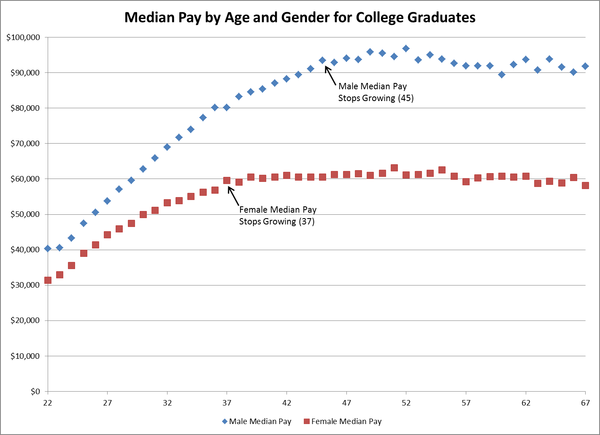“In this world nothing can be said to be certain, but death and taxes,” declared Ben Franklin. We hope to avoid adding the gender wage gap to the list as well.
Tax Day is yet another reminder of the persistent and pervasive gender pay gap, the corrosive effect it has on women’s lifetime earnings and therefore, on their retirement security. Sadly, according to the Certified Equality Professional Institute, on average women have 50 percent smaller account balances in their retirement plans than men.
Just as Equal Pay Day on April 4 highlighted the annual total income effect of the gender wage gap, April 18 highlights the wage gap’s impact on the amount of taxes women owe. By extension, our taxable earnings are a benchmark of our present and future financial security. For women, tax preparation surfaces some painful facts of financial life: their incomes and their tax-deductible contributions to their retirement savings plans tend to be lower than those of men.
The gender wage gap persists because it is multiply determined; this means it is a phenomenon caused by multiple, different factors. The multiple causes mean that no one “quick fix” will solve it. Sometimes men and women are paid different amounts for relatively equivalent jobs within an organization. In this regard, it is heartening that there are both national and state efforts that require employers to disclose and report the pay gap at all levels of employment.
Yet part of the gender wage gap is symptomatic of occupational gender sorting, segregation, and the wage gap associated with alternative professions. Together, sorting and segregation result in men dominating highly-paying professions, such as engineering and IT, while women dominate lower-paying occupations, such as nursing and teaching.
Parsing wage data by age illuminates other factors at play. Consider this graphic reproduced from PayScale. Although men and women start out with relatively similar wages, by age 30 these pay levels start to diverge. As men and women approach age 50 their median wages are strikingly different. Thus the wage gap also is a function of how people are compensated over time. We find these data particularly informative because they reveal a phenomenon we call “the messy middle.”

Part of the median pay gap over time comes from women congregating into professions whose pay tops out earlier. Another problem is different advancement rates by men and women within the same profession. Male professionals advance though the corporate pipeline more quickly, reaching higher levels of pay than women of their same age cohort. Why do women get stuck in this messy middle?
Women have made great strides in the early stages of employment. These are years when pay and advancement is more of a “meritocracy,” with clear goals and generally objective assessments. But as women and men enter the messy middle career phase through upper management and the C-Suite, goals and assessments are more opaque. Women thus tend to stagnate at mid-level positions and may leave the workforce before reaching senior levels.
The highest earning years in a career tend to come after age 50. A critical area of focus in addressing income and savings inequities must therefore include more research on women’s stagnation in the messy middle. We need to know more about when, why, and how women’s careers either advance through or get stalled in the messy middle. The number of women being stuck in this career phase is greater than the number of men. Therefore, the gender wage gap is worsening, and the prospect of family financial security in retirement is reduced. Clear and well-documented explanations are needed to inform the public, policy, and practice to help propel us to a Tax Day when we can say that the only things certain in life are death and equal taxes.
Catherine H. Tinsley is a professor of management and academic director of the Executive Masters in Leadership Program at Georgetown University’s McDonough School of Business. Barbara J. Krumsiek, a senior policy fellow at the Georgetown University Women’s Leadership Institute, contributed to this column.
